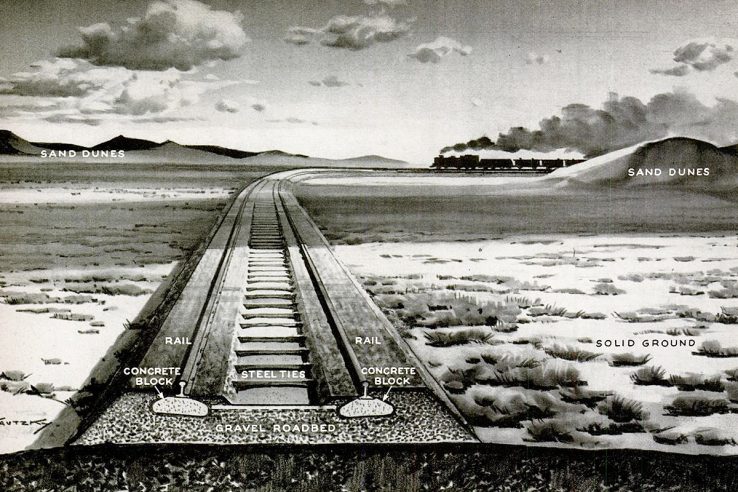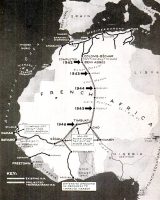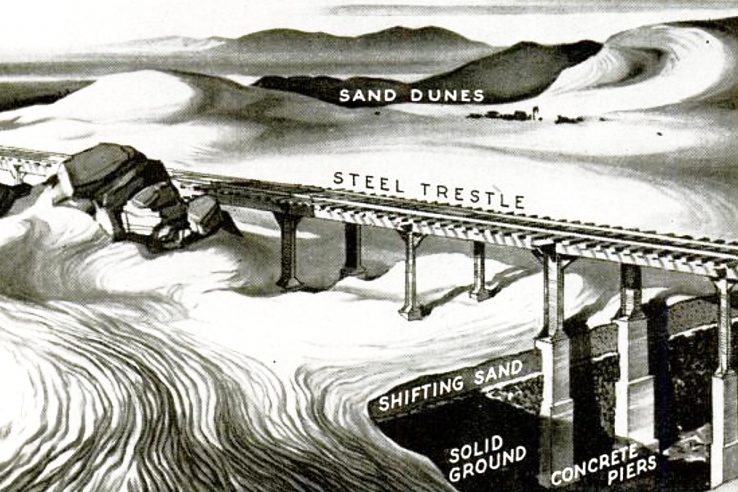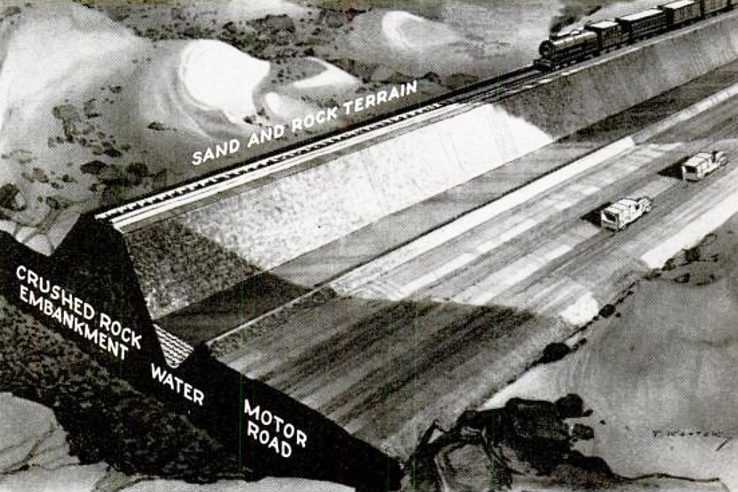In March 1941, Vichy France started building a railway across West Africa that was meant to link up Algiers, Casablanca and Tunis in the north with Dakar in the west and Abidjan, the capital of Côte d’Ivoir, in the south.
Construction never got farther than Béni Abbès, an oasis town in the Algerian desert.
The plan dated back to 1879, but it wasn’t until the collaborationist government of Marshal Philippe Pétain took an interest in the idea that it got off the drawing board. Vichy saw it as a way to promote the unity of the French Empire.
That unity was sorely lacking. The French colonies in Equatorial Africa supported the Free French of General Charles de Gaulle. Some of his captured soldiers, and other prisoners, were forced to build the railway in appalling conditions.
Life magazine reported in November 1941 that construction was not such a great engineering feat as its readers might imagine. “The route runs largely over hard ground and through the low point in the Atlas Mountains.”
At the time, the slowly advancing railroad served as a railhead for attacks on the Free French and British in the heart of Africa. “After the war,” Life predicted, “it would open to Germany the riches fo the Niger River basin and all West Africa, putting Berlin four days from Timbuktu by rail and ship.”








